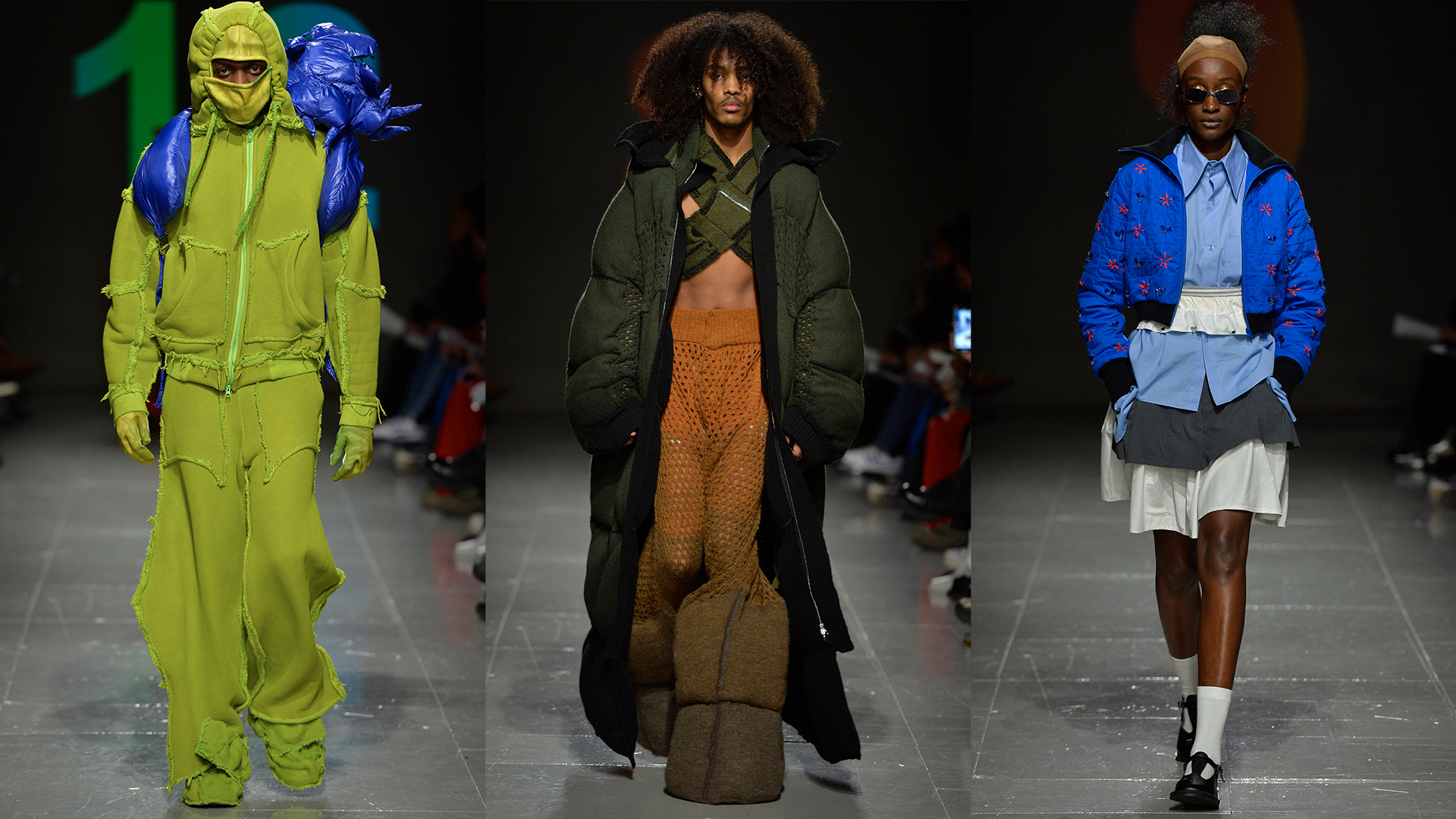While the London Fashion Week calendar this season was dominated by the return of blockbuster spectacles to the British calendar, with Daniel Lee’s Burberry debut and Moncler’s mega-festival style experience closing out the week, a highlight was nonetheless a show that focussed on designers at the opposite end of the spectrum in terms of scale. Indeed, ahead of the aforementioned shows, an international coterie of press and buyers flocked to see what the cream of the crop of Central Saint Martins’ Class of 2023 had to offer.
A parade of directional ideas from 20 students — spanning themes and techniques including the repurposing of secondhand garments, zero-waste laser-cutting techniques and nuanced representations of gender and racial identity — it served as a welcome reminder of the fact that cutting-edge young talent is what really gives London its soul as a fashion capital. And it’s in no small part thanks to schools like Central Saint Martins that that’s the case.
Here, we catch up with the designers behind seven of the show’s standout collections, including Yaku Stapleton, the winner of this year’s prestigious L’Oréal Prize.
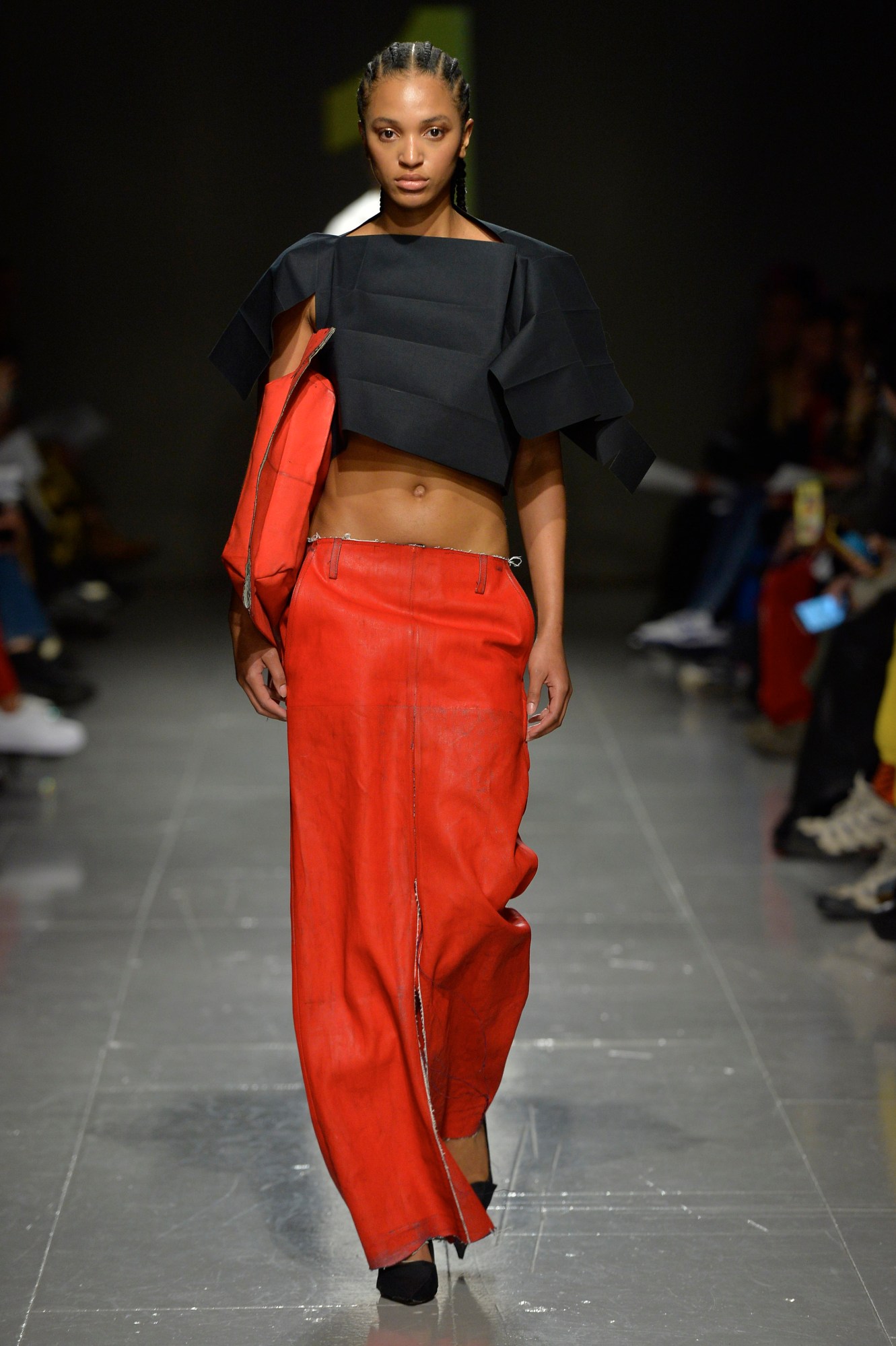
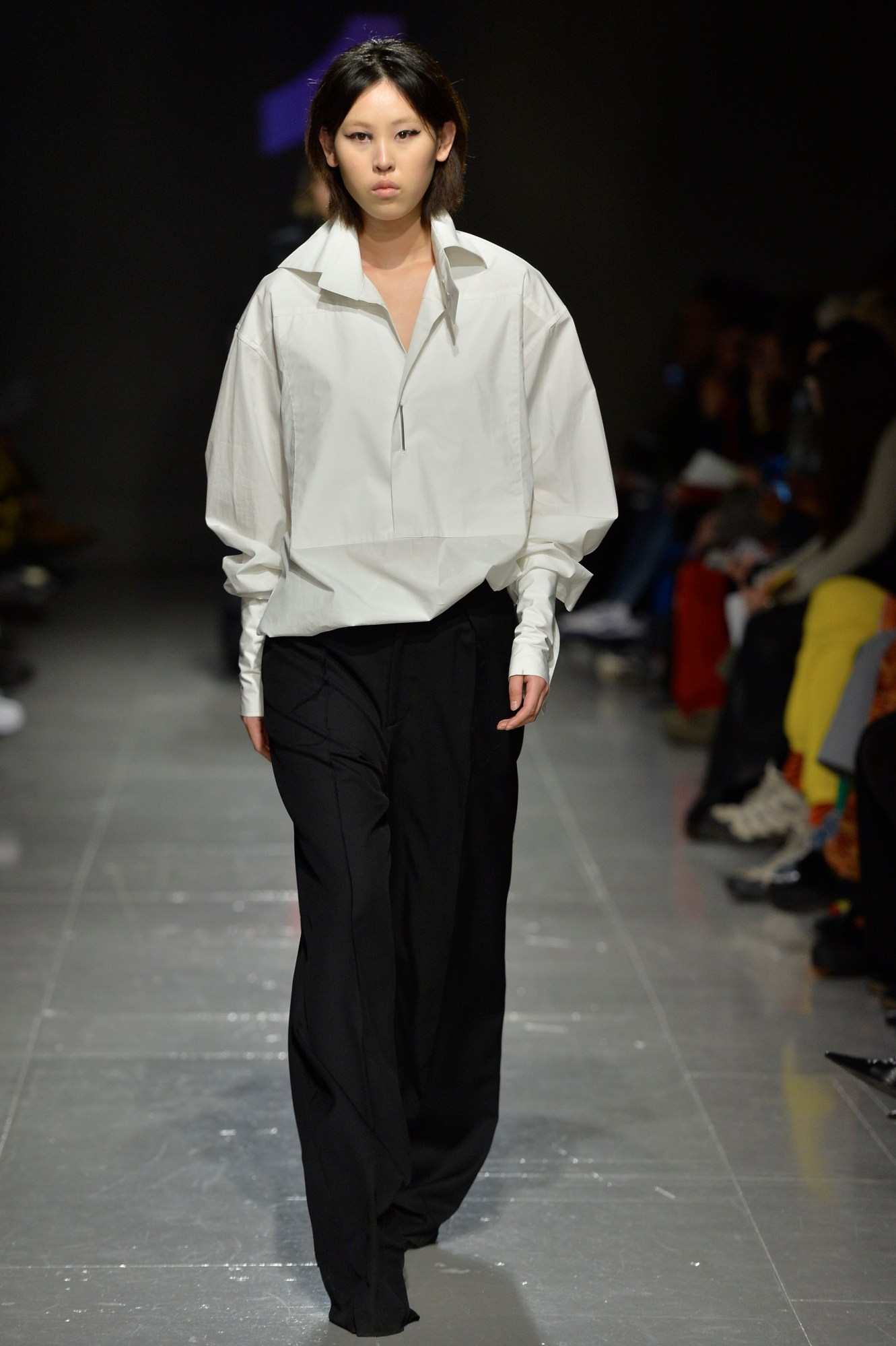
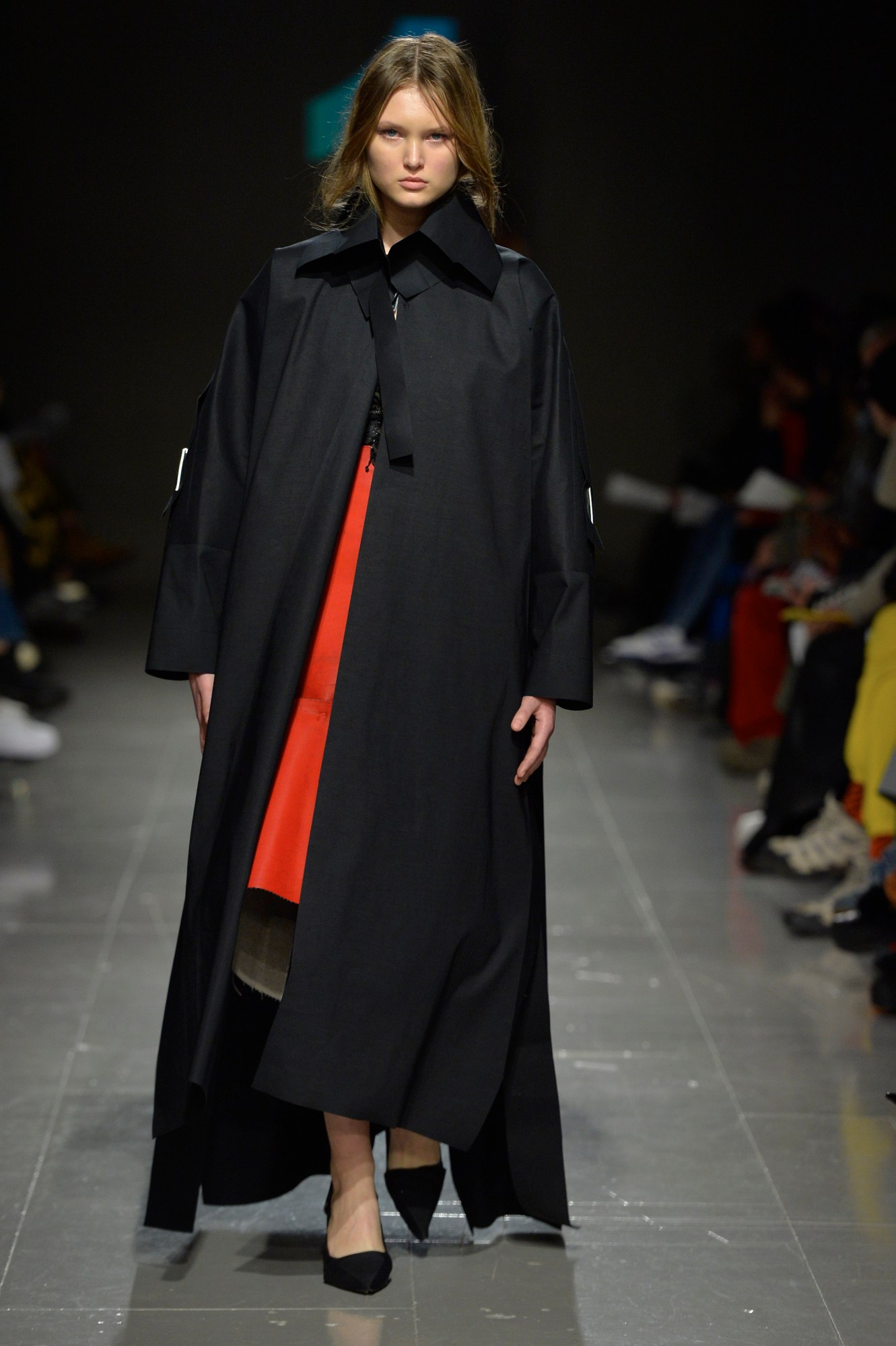
Giorgia Presti
How would you introduce your collection? What was the main motive behind it?
Debris is inspired by disposable one-time-use objects and zero-waste packaging; a study of objects we usually rip open then throw to the curbside. Raw, laser-cut, one-piece box nets are draped on the body and clamped together with aluminium staple closing systems. Torn apart, shrunken vintage sequins are hand-stitched to metallic, foil-printed lycra. Graphic, rubber-bonded cotton silhouettes are formed by razor folds and perforated edges.
The making process is direct and extremely fast — it takes just 30 seconds to cut once the fabric is on the laser bed, which uses renewable energy. And as these pieces are not sewn, the garment is basically finished at that point.
What was the most interesting or challenging part of the design process in creating it?
Trusting in the simplicity and power of allowing something to be what it is.
What are the most interesting technical details that you’ve used?
There’s no sewing involved — each piece is laser cut, featuring staple-clamped closures.
What are you most excited for people to see in your work?
That every box folds back into a box.
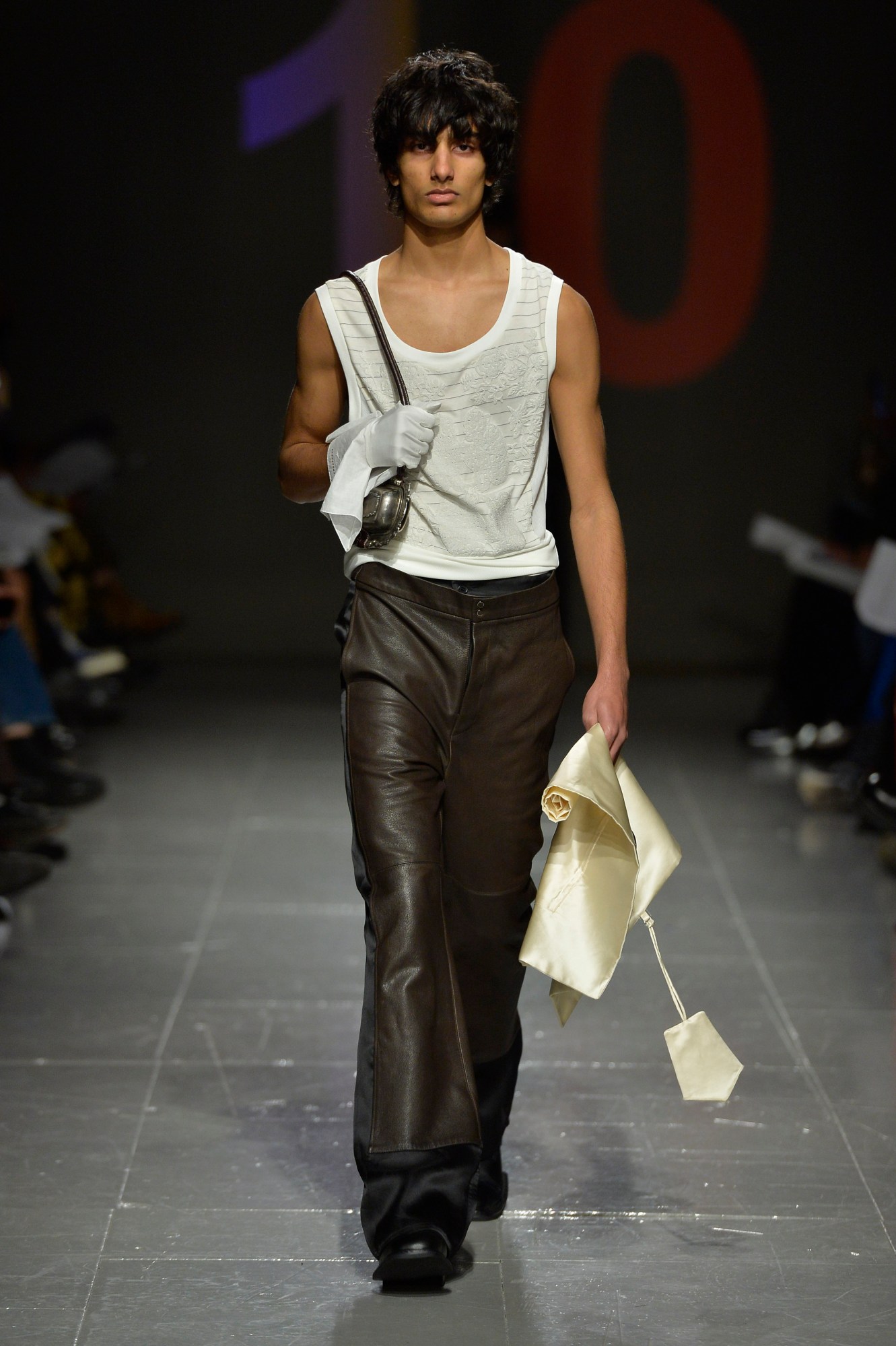
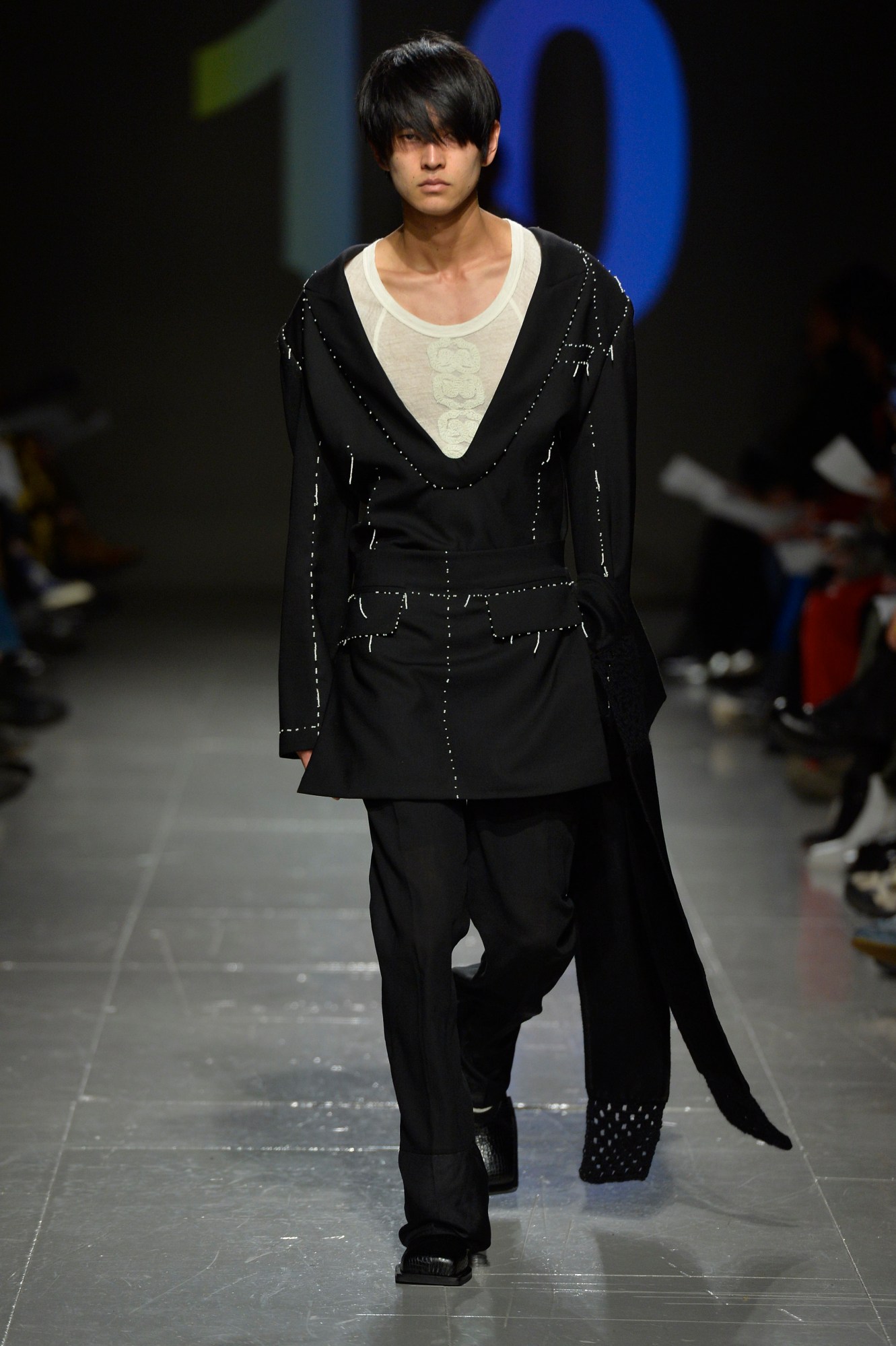
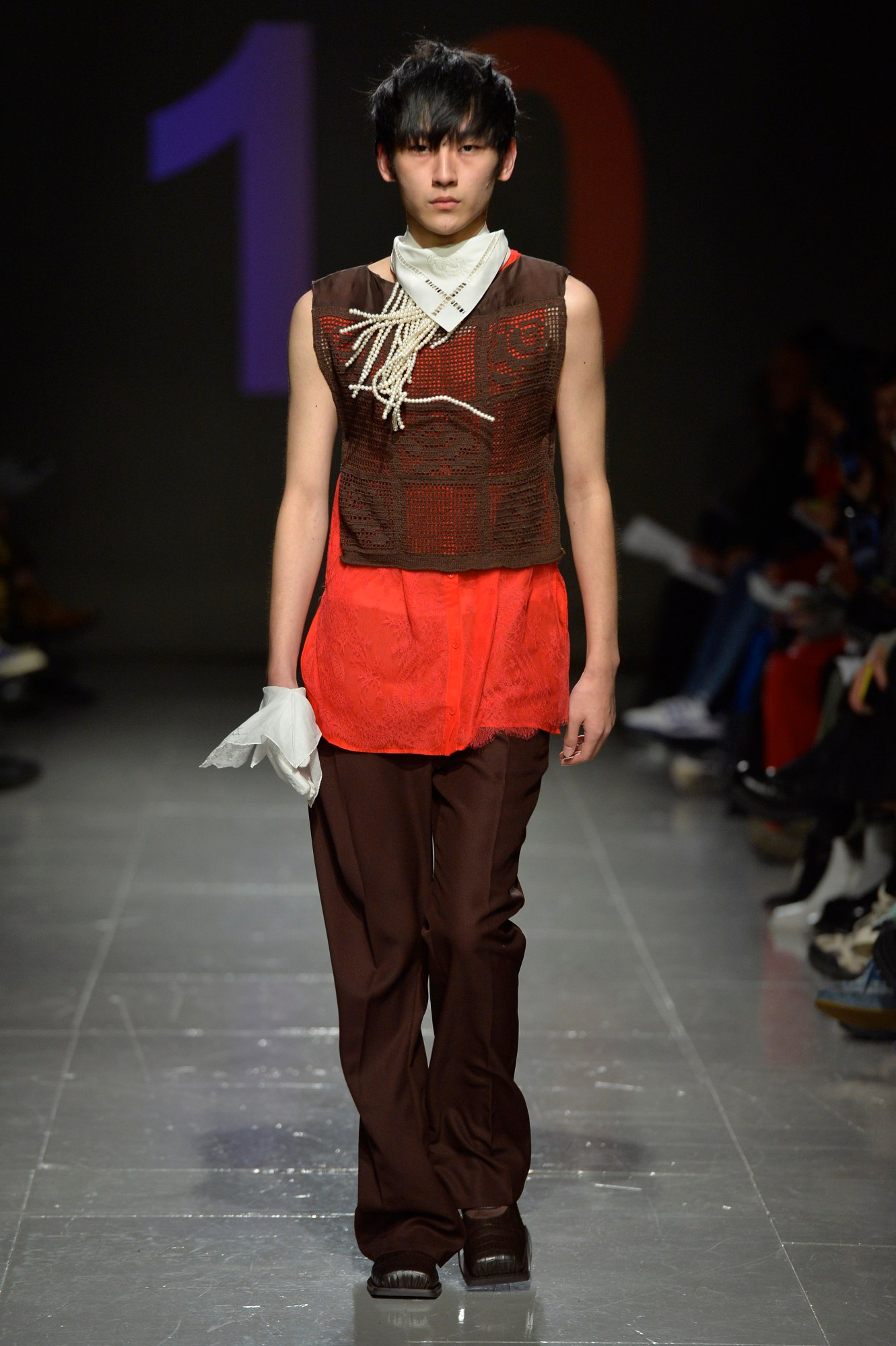
Chen Sifan
How would you introduce your collection? What was the main motive behind it?
I want to use About Him to break gender stereotypes, which dictate that the public sphere is the domain of men and the private sphere is the domain of women. I combined the constructions of menswear archetypes (such as the trench coat, the work suit and work shirt) with domestic objects (such as ironing boards, curtains and aprons).
Who did you design it for?
Men who are delicate and fragile.
What are the most interesting techniques/technical details that you’ve used in your work?
When I was working on this collection, I worked with a dazi xiu (a kind of traditional Chinese hand embroidery) atelier. It’s a technique you often find on traditional qipao dresses, which members of young generations in China barely wear these days. I therefore combined this embroidery with pieces that are commonly been worn by younger people like jeans and tank tops, helping them to realise that it’s actually really cool.
What are you most excited for people to see in your work?
To feel the poetry of its details.
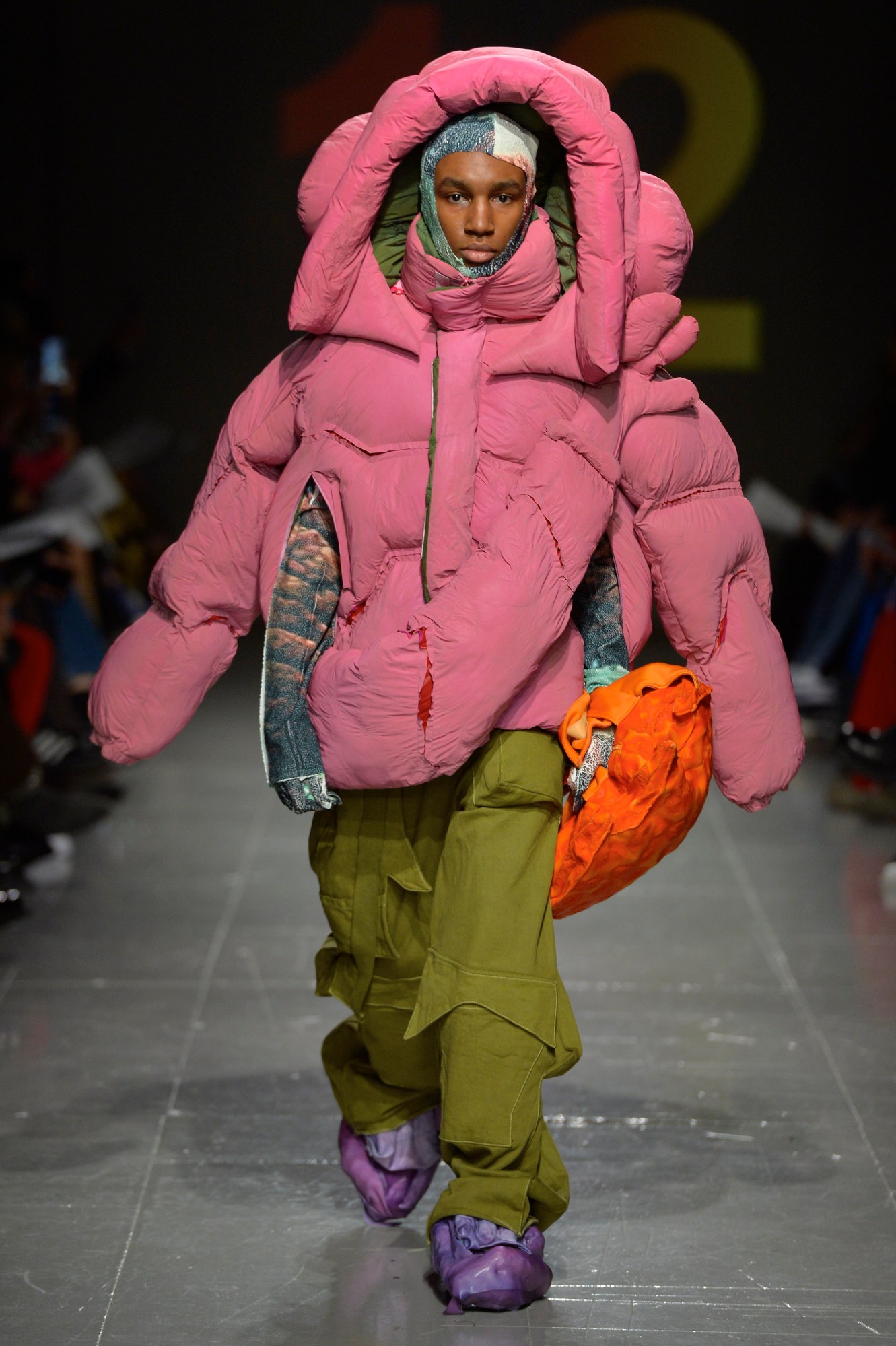
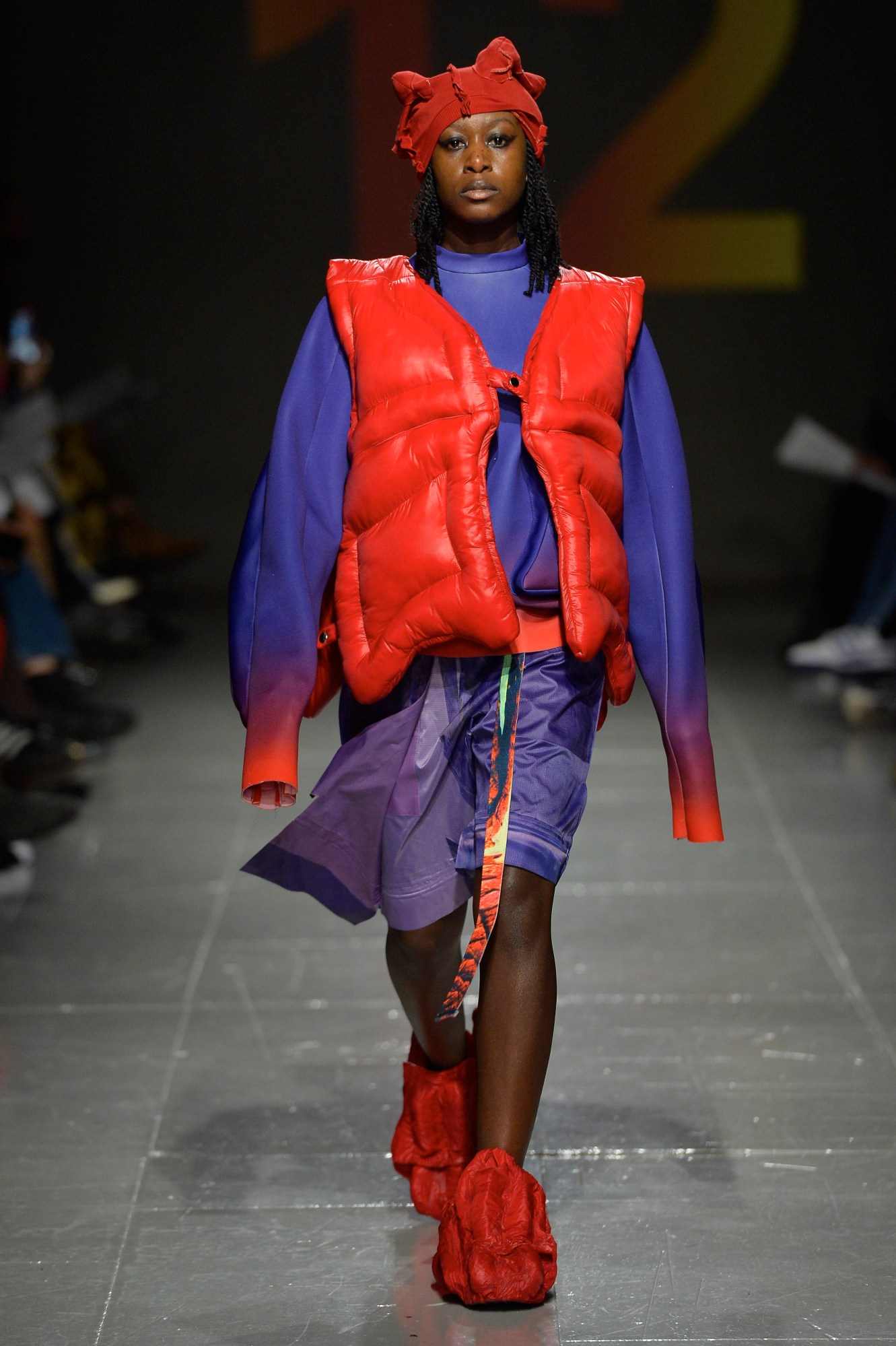
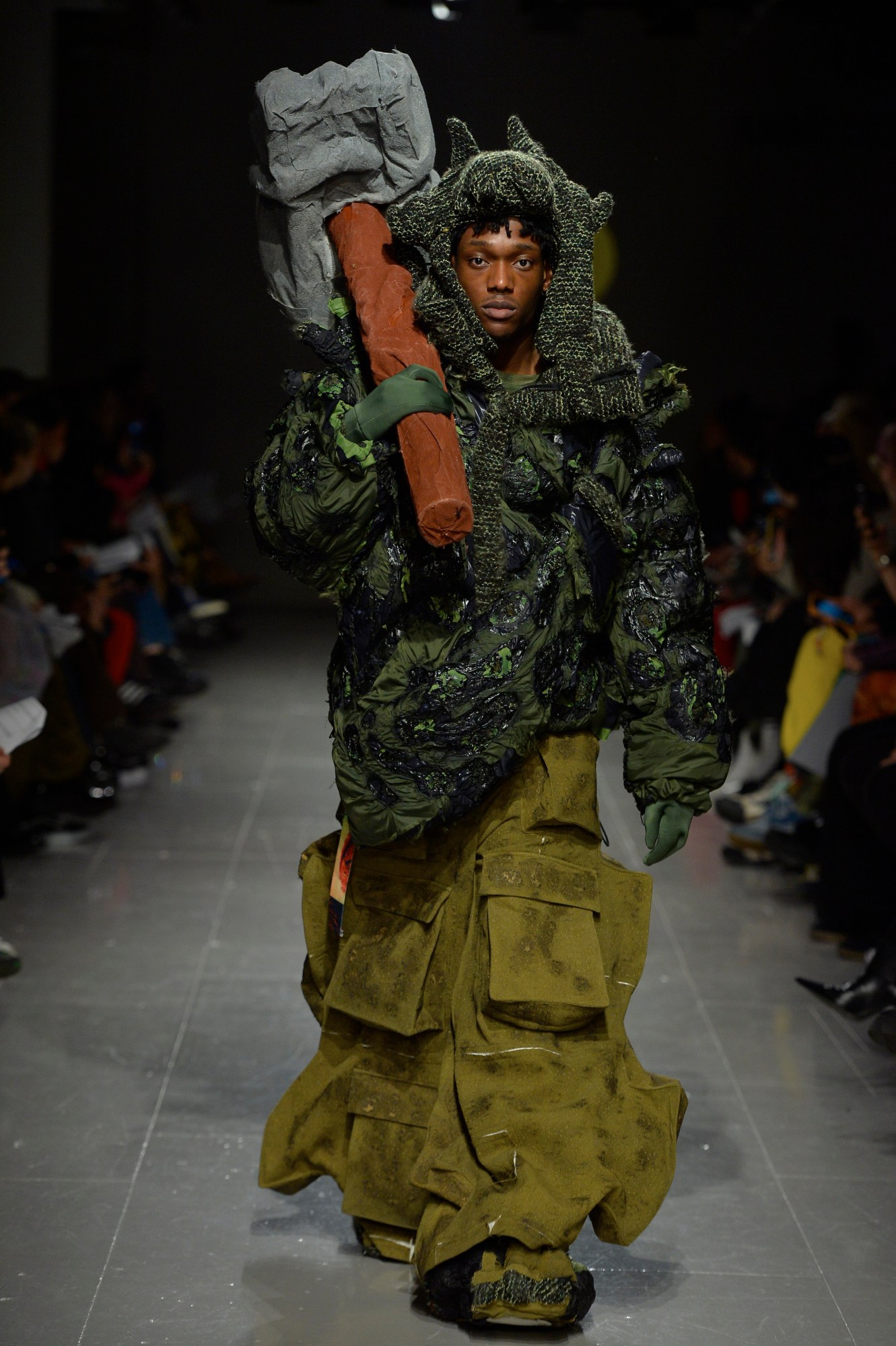
Yaku Stapleton
How would you introduce your collection? What was the main motive behind it?
My research initially focused on sensory design, physical depth, and scale, but as I completed this collection, I incorporated elements of Afro-Futurism, which allowed me to explore my own identity and blend themes of fantasy and online role-playing games like Runescape. According to Ytasha Womack, “Afro-Futurism is a way of looking into the future and alternate realities through a black cultural lens,” and imagining oneself in the future creates agency.
For this collection, I aimed to create a family reunion in an RPG space, drawing inspiration from my family and incorporating their personalities into character designs inspired by the creatures found in the land, sky, and water of the Earth. My goal was to build these characters as garments, finding a balance between costume and fashion design.
Who did you design it for?
My garments are designed for those who appreciate clothes that tell a story. Wearing them brings back the self-explorative emotions I experienced during my formative years when playing dress-up with my brother. With my garments, I aim to expand the range of personas one could embody. By wearing them, I hope my people can experience a middle ground between cosplay and nostalgia.
Give us three things that were on your research board.
Eiji Tsuburaya’s Godzilla. Runescape OS. Works by Henry Moore.
What are the most interesting techniques that you’ve used?
The sculptural base of practice is still key. All my physical design begins with plasticine built onto dolls allowing me to establish the shape and form I am seeking to build. Once I have replicated the shapes as garments, I choose the fabric, considering what would best reflect the appearance of the characters when converted to their real-life format. I used synthetic fabrics that could be exaggerated and warped through heat treatments, shrinking, and layering, as well as natural fabrics that conveyed a sense of honesty in a character. As with all my projects, I sought to use waste fabric, objects, and “rubbish” that I came across, giving new life to items that would otherwise end up in landfills and providing a starting point for further conversation. My larger characters have voluminous shapes made from reclaimed duvets, while the smaller humanoids dressed in dragon hides are realized from upcycled Godzilla-skin-textured tech-wear garments.
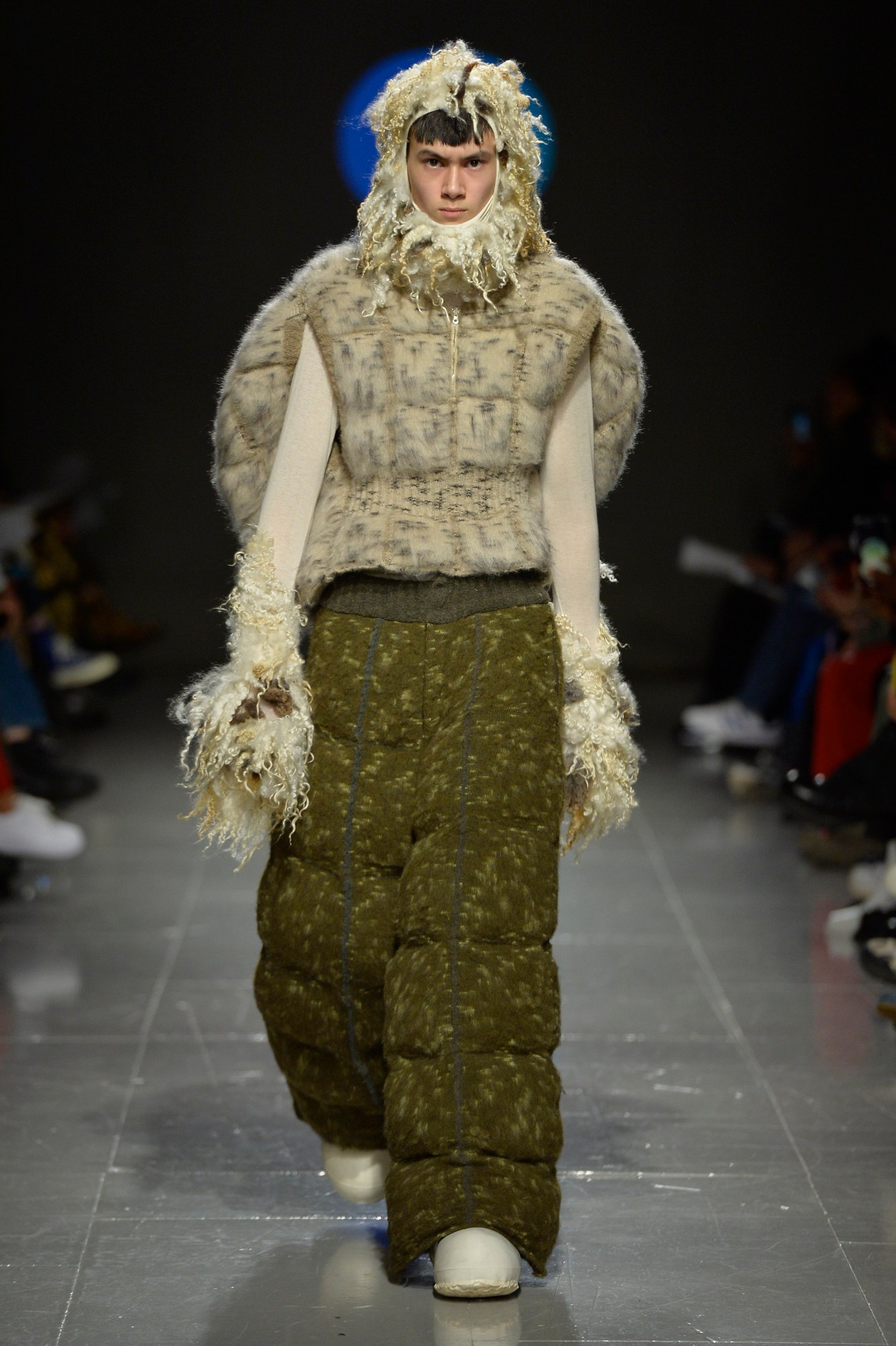


Oscar Ouyang
How would you introduce your collection? What was the main motive behind it?
Nature can connect different cultures. Whilst our world is divisive, nature can connect us without speech. The Kindred of the Kibbo Kift and and the Greenham Common protests inspired and informed this collection, while knit patterns are drawn from Southeast Asian plants like alocasia and philodendron, reflecting my cultural heritage.
Who did you design it for?
People who are confident with their roots. I want my audience to have a sense of belonging while wearing my pieces.
Give us three things that were on your research board.
The Kindred of the Kibbo Kift uniforms. Military combat clothes references. Textiles developed from Southeast Asian plants that are in my courtyard.
What are you most excited for people to see in your work?
The details. I want people to see the possibilities of knitwear. And I’m hoping that the viewers can find a moment of inner peace by looking at this much greenery.
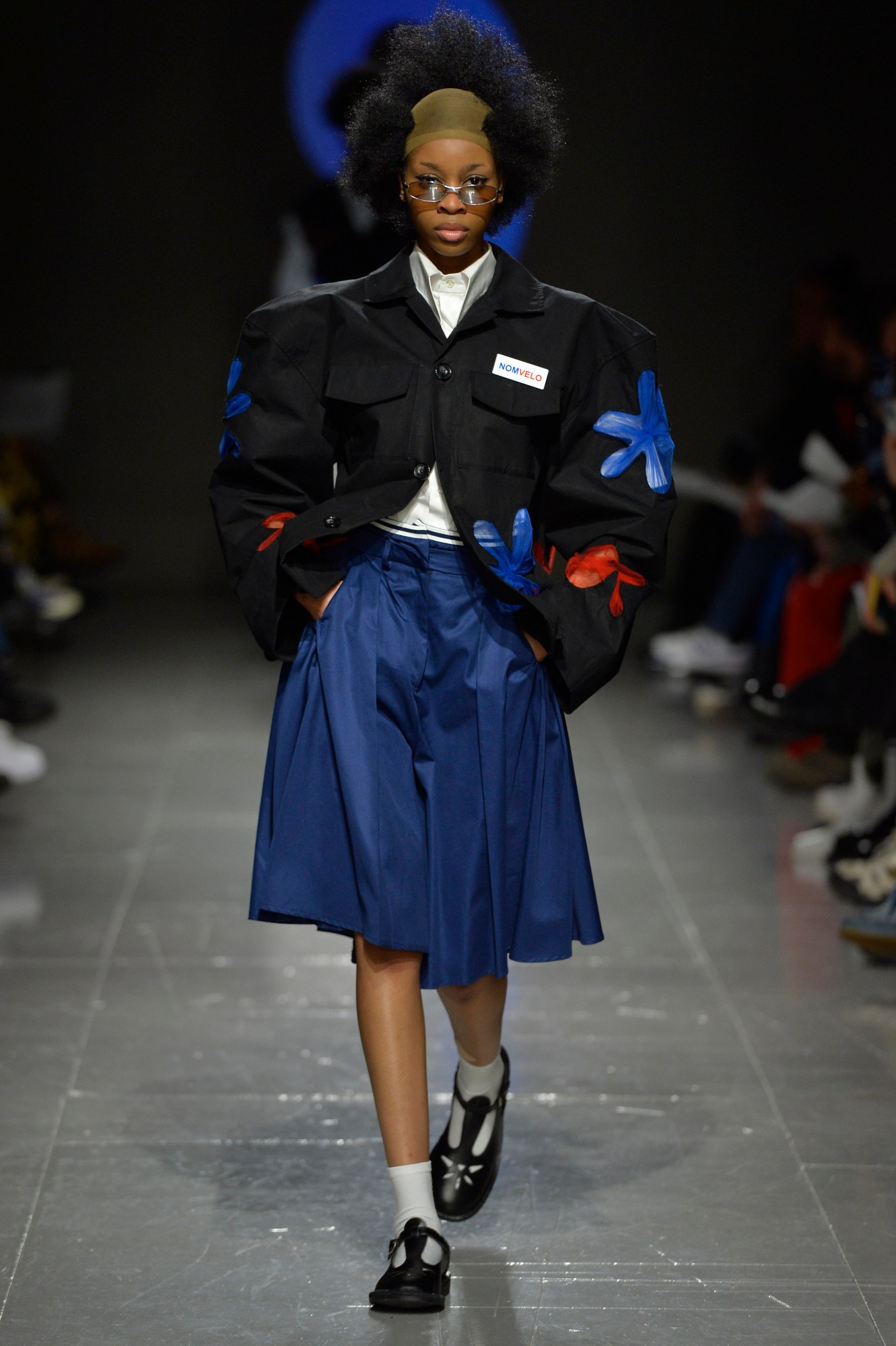
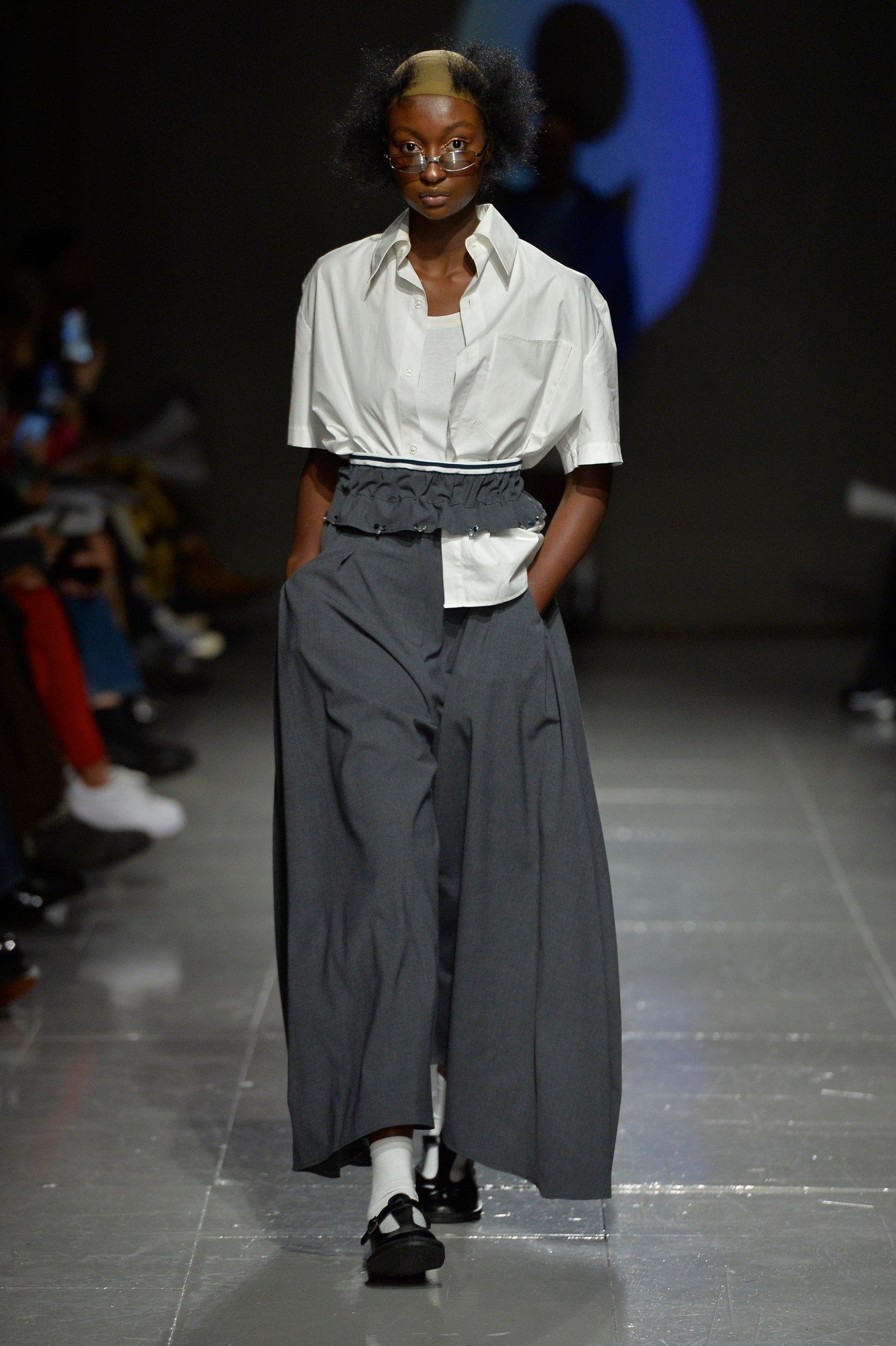
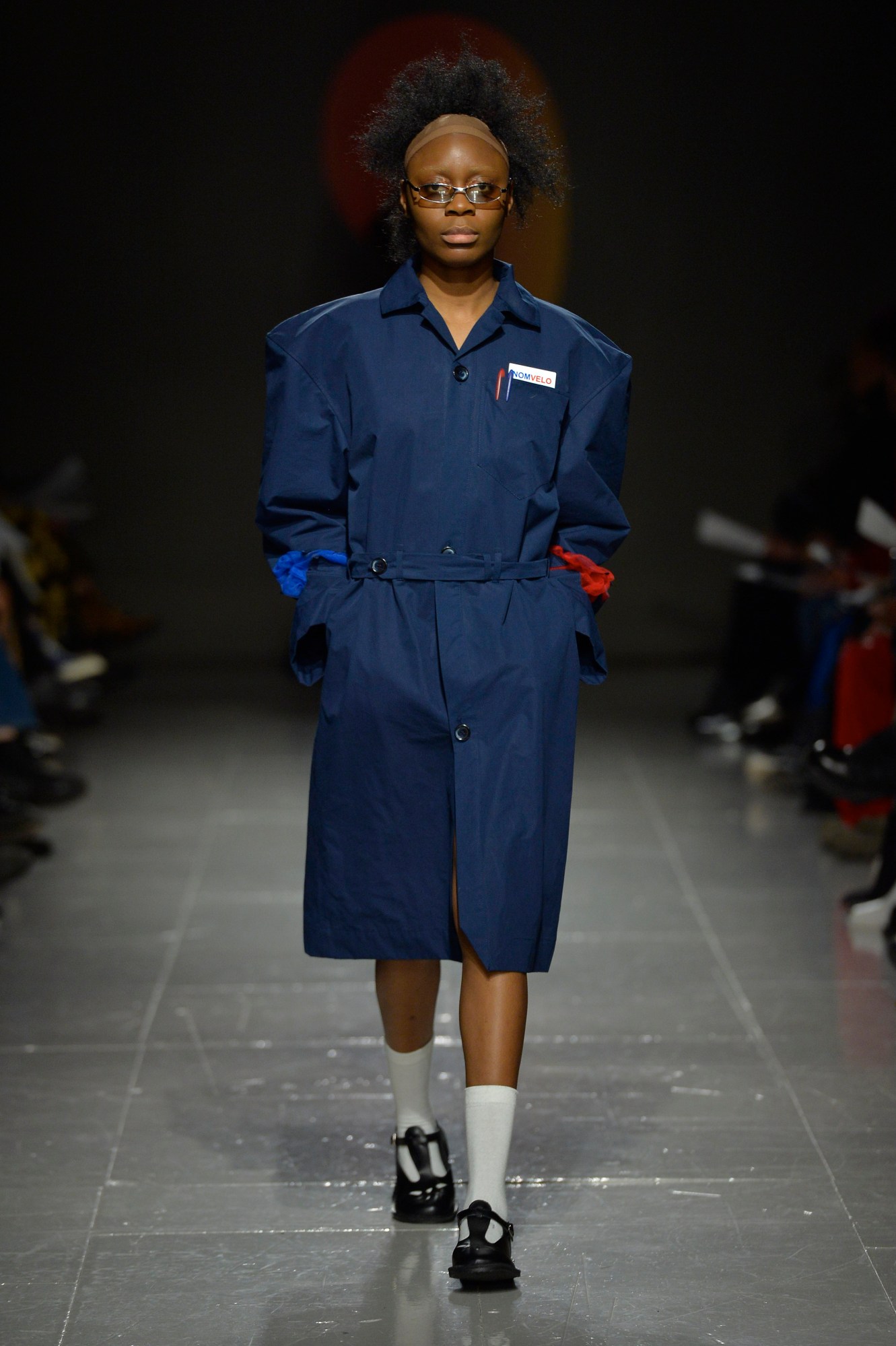
Nomvelo Dlamini
How would you introduce your collection? What was the main motive behind it?
Christian colonialism drew scriptures to deceive Black women into head shaving, as their hair was seen as ungodly, unsightly and untameable. Looking at Nontsikelelo Lolo Veleko’s work, who focuses on Black identity and dress, reminded me of black androgynous music artists in the 1990s and 2000s whose genders were debated. The motive behind this collection was to prove that Black women with androgynous features are still being queried about their looks and have to prove their femininity.
Who did you design it for?
I designed it for women who have androgynous looks, and who need to be celebrated and appreciated.
What was the most interesting or challenging part of the design process?
The most interesting part was traveling to Eswatini (Swaziland), taking photographs of the school children that wore uniforms, and picking out details and elements that define them. The most challenging part of the process was trying to take the masculine shape of a tailored jacket and make it a shacket.
What are the most interesting techniques you’ve used?
The gathering, and the hairstyle motif that I created with tulle fabrics and embroidery.
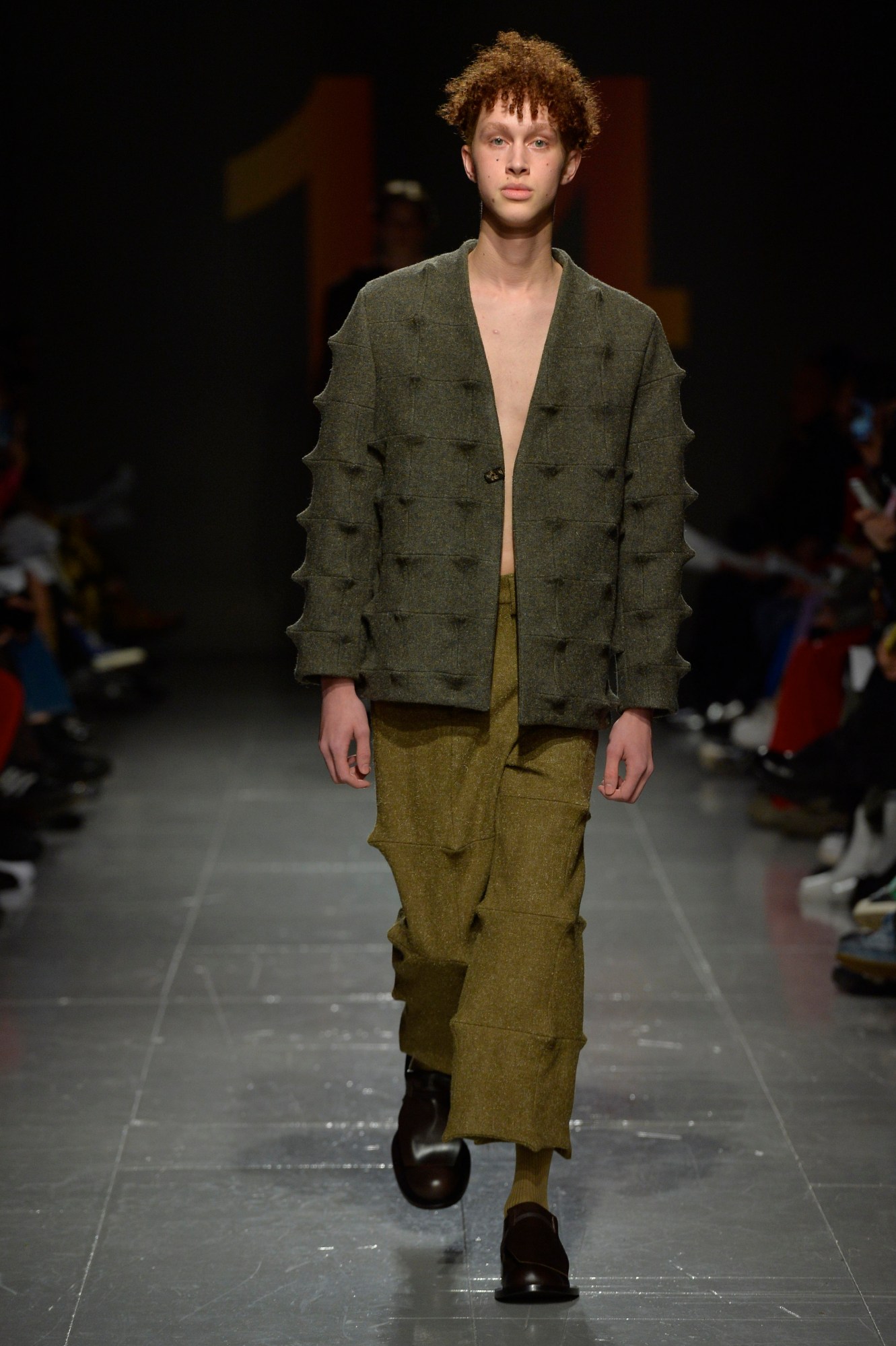
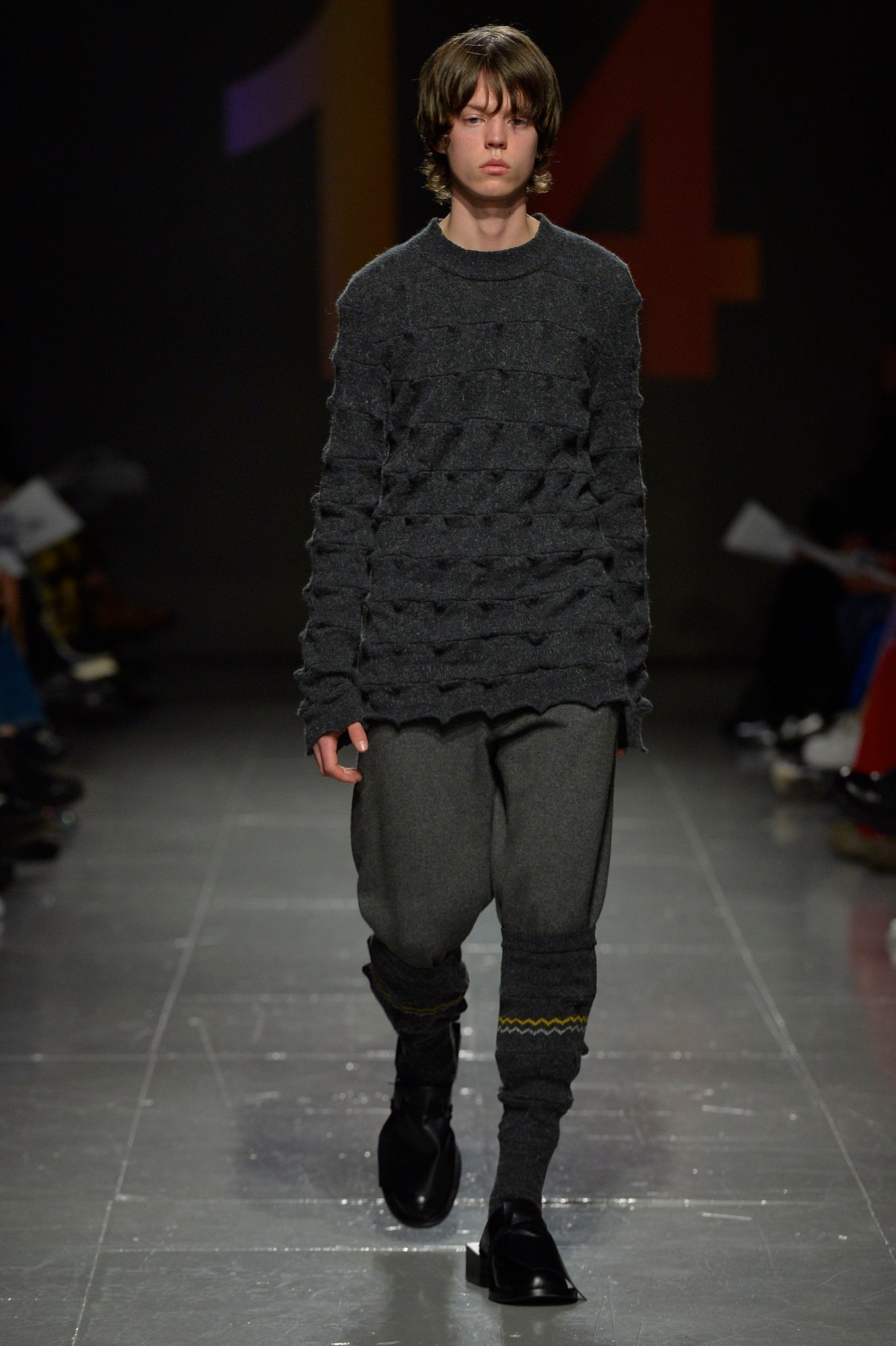
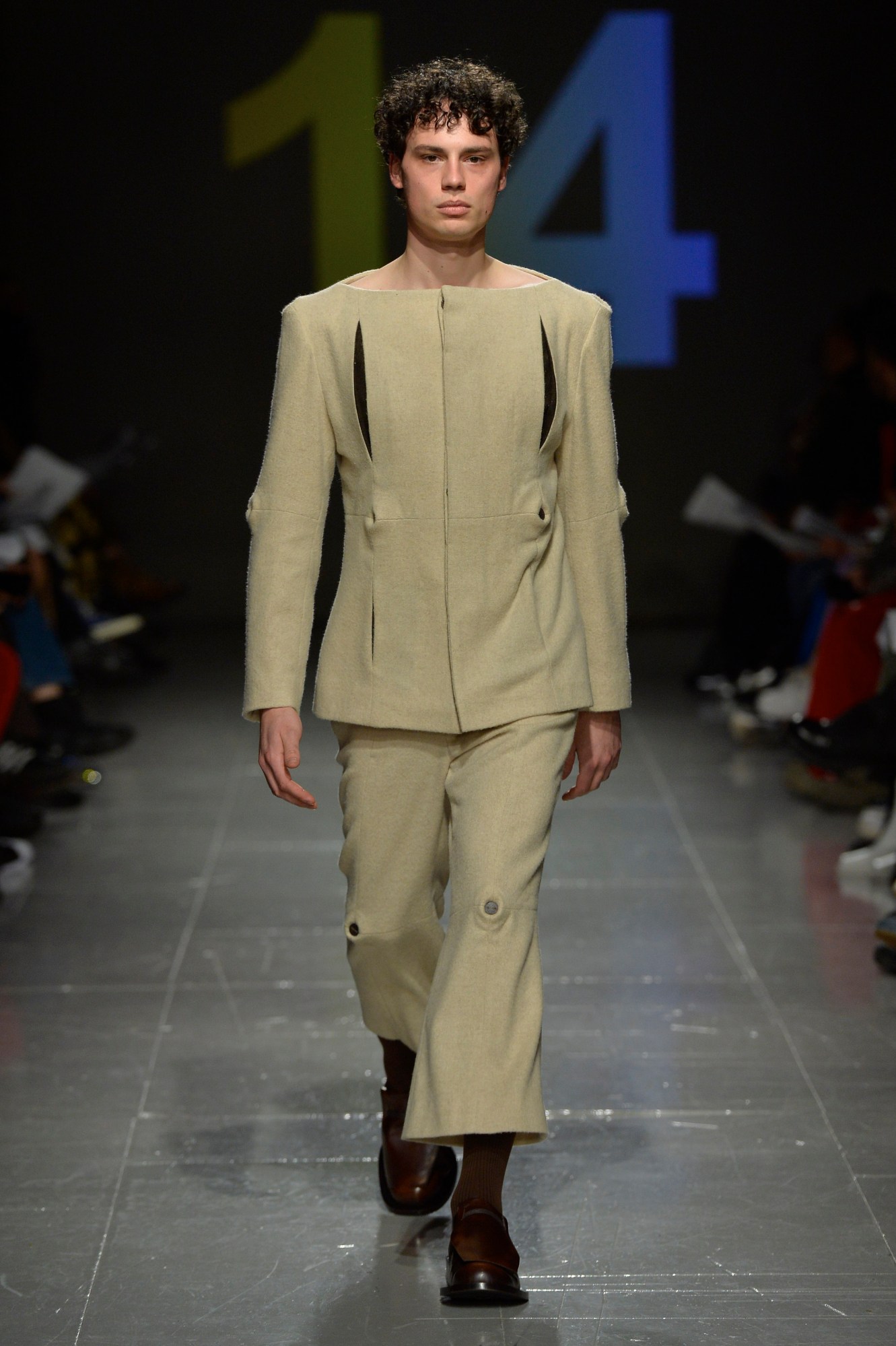
Woojun Jang
– How would you introduce your collection? What was the main motive behind it?
The aesthetics of slowness. Valuing the time and effort spent on making clothes through slow production methods of craftsmanship. In this era of rapid living with little space for tradition, I pause and look at my work produced by my hands with little help from machines.
I believe that the time and effort spent on making clothes is proportional to the time spent on wearing and storing the clothes by consumers. Handcrafted clothes give wearers an opportunity to not only personally develop emotional bonds with garments, but also create a new understanding of the value of the labour and time spent on making clothes.
Who did you design it for?
For all the people who love my clothes.
What are the most interesting techniques that you’ve used?
The spiked shapes. From making 2D patterns to accurate calculations using Illustrator, it takes a lot of time and effort. When making this textile, the fabric also plays a very important role. The thickness of fabric should not be too thick or thin, and it should be a fabric that does not require overlock.
What are you most excited for people to see in your work?
The interior design of the coat in look 3. In this collection, I lined all of the outerwear apart from this piece, because a beautiful interior design came about by total coincidence. It’s perhaps more creative and beautiful than the exterior design.

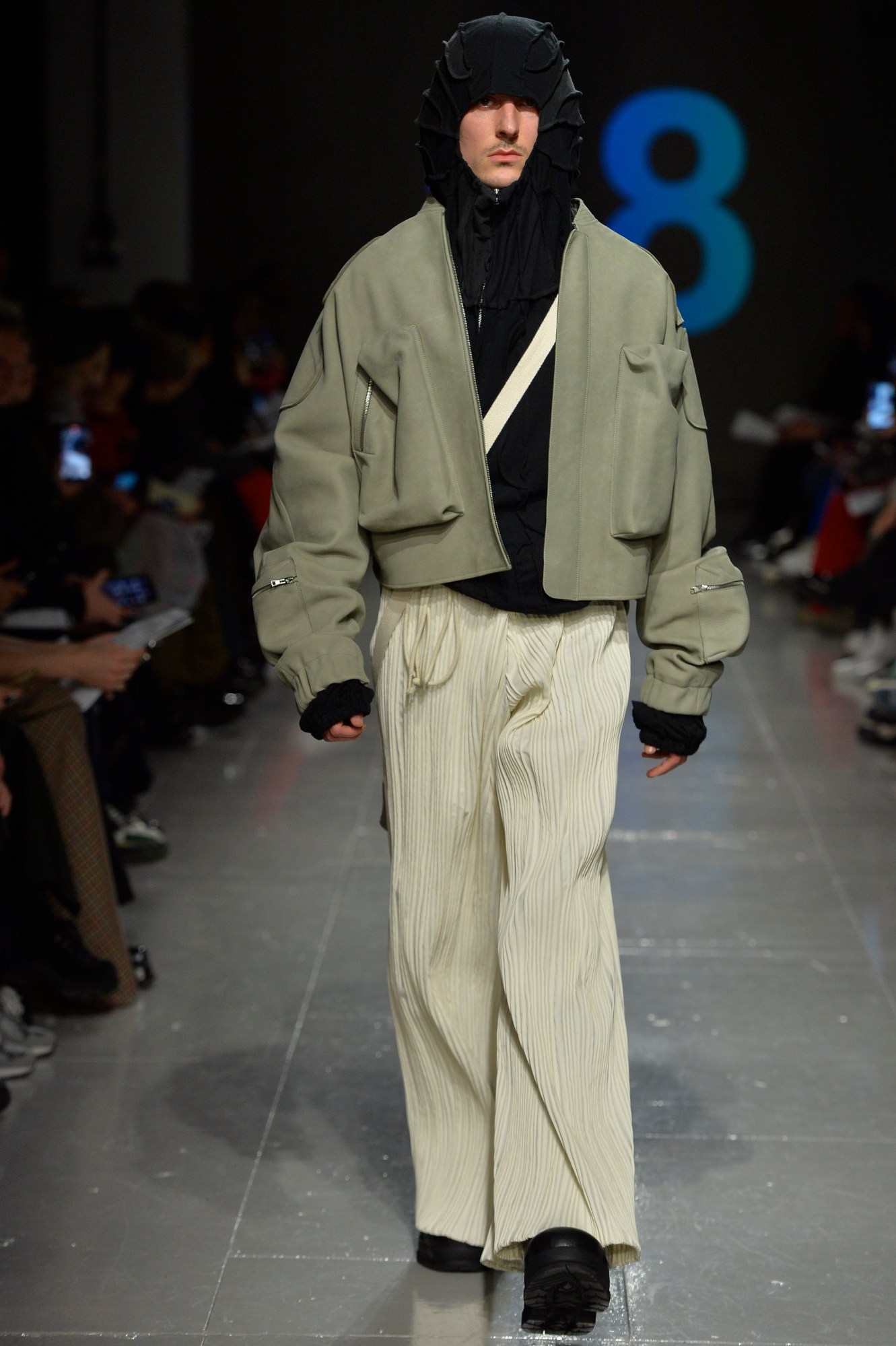
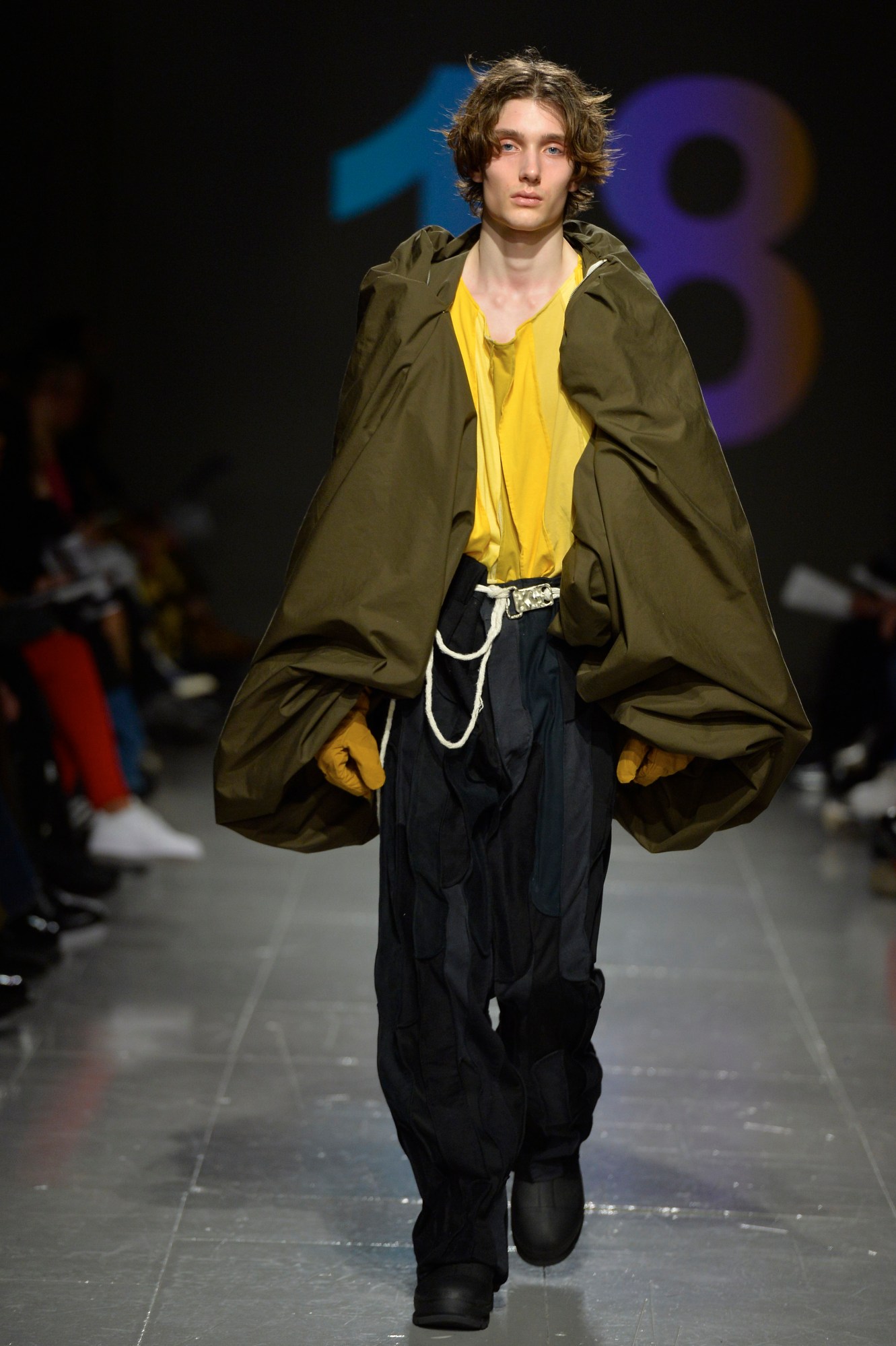
Alessandro Tondolo
How would you introduce your collection? What was the main motive behind it?
My collection is called Cohaeresco, which translates from Latin to growing together, sticking together or connecting. With it, I aim to highlight the dissonance between humans and nature, as well as the differences and distances between individuals themselves.
I juxtaposed the socially motivated connectivity of fungi to human-made systems and processes. Symbiotic fungal networks connect and strengthen their surroundings rather than demarcate and weaken them. As an example of a similar nature-bound but flawed structure, I studied agricultural systems and the mistreatment and exploitation of farmers, field workers and the land they work on, with a focus on Mexican farmers in America. The core of my design practice is the notion that the only way forward is to understand our interconnectivity with others and that we must work with nature – not around or against it.
Who did you design it for?
There isn’t a specific person I had in mind when designing this collection but more of an accumulation of people. It is for someone who enjoys the outdoors (most of the garments are made out of organic or recycled waterproof Ventile), appreciate nature and its protection (the other components are either upcycled or sustainably sourced) but also like to be practical, elegant and somewhat eccentric. You could go hiking at 3 and go to a gallery opening at 8.
What was the most interesting or challenging part of the design process?
One goal was to see if I could managed to change the perception of garments or materials that are usually seen as easily discardable. Old, pre-worn cotton t-shirts, hoodies and trousers were reworked in a complex and somewhat time-consuming way, to show that also cheap materials and unwanted clothes can become something “new” and exciting. At the end, it’s society that decides the price and value of an object. But sometimes we can help change that narrative.
My collection has a lot of structures and textile manipulations but for them to stay sustainable and ecological I did have to find other ways, some more complicated and others more difficult to achieve from the get-go. I am proud to say that my collection is almost 100% sustainable and uses no synthetic fibres, except for a few threads and a few waistbands. But hopefully, even that can change in the future.
Another goal was, creating my own material out of kombucha, with the help of a friend, where we took waste material (cherry stones) and grew our own Kombucha SCOBY (this slimy, gelatine like mass), which we then dried and pressed, to create this leathery material. The outcome isn’t perfect but has a lot of potential and shows that there is always a sustainable way. It might take longer; it might be more difficult to achieve but it is something that in my opinion is necessary we all do.
What are you most excited for people to see in your work?
I hope they see that there is a way to use “zero” synthetic fibres, sustainable materials and yet create something interesting and “new”. That they realize they can be dressed interestingly without having to compromise the environment. And hopefully that they find my garments interesting enough to then immerse into my microcosmos and the narrative that I aim to build, which is to reconnect with nature and acknowledge its importance.
Credits
All images via Central Saint Martins
